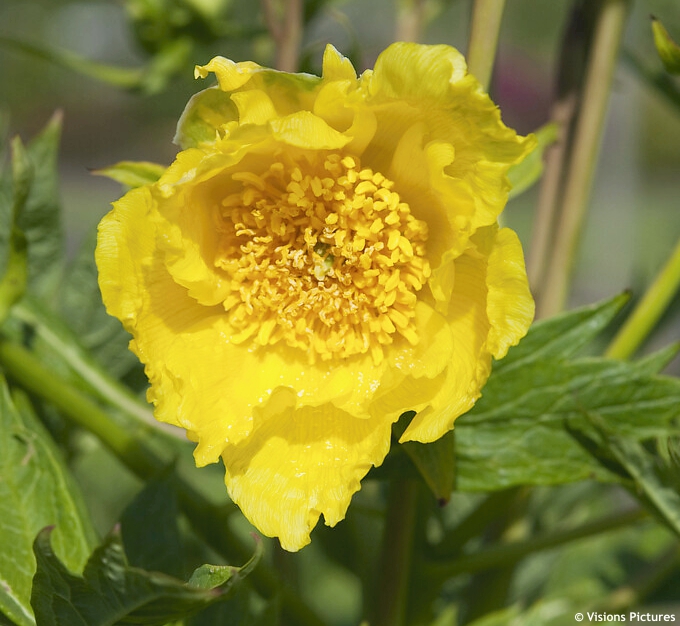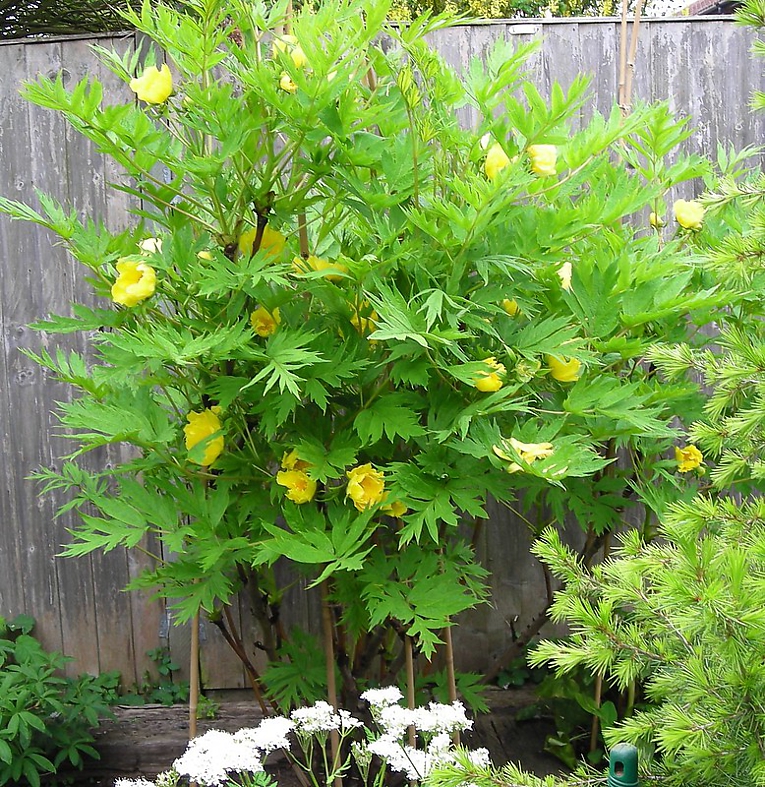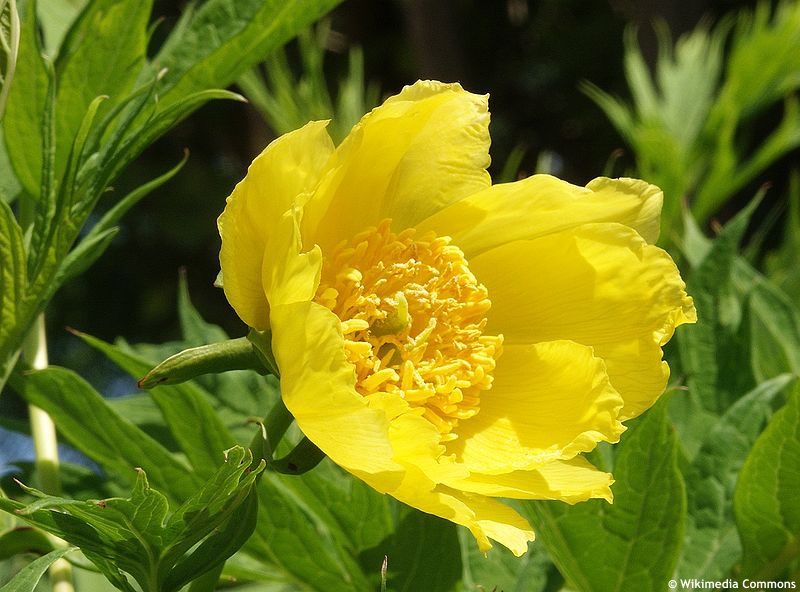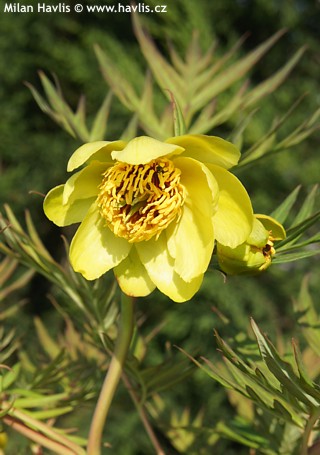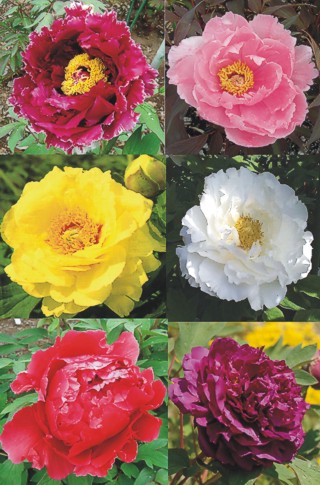Paeonia lutea var. LUDLOWII Ludlow's tree peony
size/type
medium-sized shrub,taller shrub
usual height
1,5-2,3m
usual width
1-1,5m
leaves
deciduous broadleaf
colour of leaves
flowers
showy
colour of flowers
blooming time
May-June
location
full to partial sun
soil type
acidic (peaty) to neutral
soil moisture requirements
evenly moist (dislikes drought)
USDA zone (lowest)
7 (down to -23°C)
winter protection
for zone 5+6

for zone 7

categorized
Paeonia
Tree peonies are popular for their shrubby habit and a slightly different range of flower colours. As they are often crossbred with p. lutea (yellow Tibetan peony) they can also offer warm shades such as yellow, orange, and warm red or salmon pink. Unlike the perennial type, these make woody branches that usually form a low, mounding shrub, and grow rather slowly. Ludlow’s tree peony, however, is a Tibetan species of a significantly larger size and with a faster growth rate. Sadly, it is considered extinct in the wild owing to over harvesting and may rise again only thanks to the effort of a few enthusiasts who bring the seeds of commercially grown plants back to its original locations.Description of the plant:
Ludlow’s tree peony makes bright yellow, single to semi-double, fragrant flowers about 12 cm across with a profusion of golden yellow stamens in the centre. They bloom perhaps latest of all tree peonies, often in the second half of May. Deciduous leaves are deeply lobed but not dissected, twice compound, mid green, matte, and turn golden yellow in autumn, showing pink stalks and some veins. It was named after British naturalist Frank Ludlow (1886-1972) who spent quite some time in the Himalayas after retirement from the army, observing and collecting plants. The plant was first introduced to market in 1936. In Tibet it is called God’s flower.
It grows faster than p. suffruticosa and may reach almost 2m tall or even more under ideal conditions. It is common that older specimens lack foliage at the bottom which is a natural appearance – new leaves and flowers always emerge from the buds at the tips of the branches. If you are not happy with it, even though pruning is not recommended, you can rejuvenate old shrubs by hard pruning every 10 years or so. Bear in mind it may not flower the following year.
Tree peonies are trouble-free plants with almost zero maintenance. All you can do is deadhead spent flowers to prevent them from making seeds. They need deep, humus-rich, well-drained soil, preferably moist and acid soil. They grow in full or partial sun. Ludlow’s tree peony is rated hardy to about -25 °C (USDA zone 6).
Last update 05-04-2022
QUICK PRICE OVERVIEW
CURRENTLY SOLD OUT













